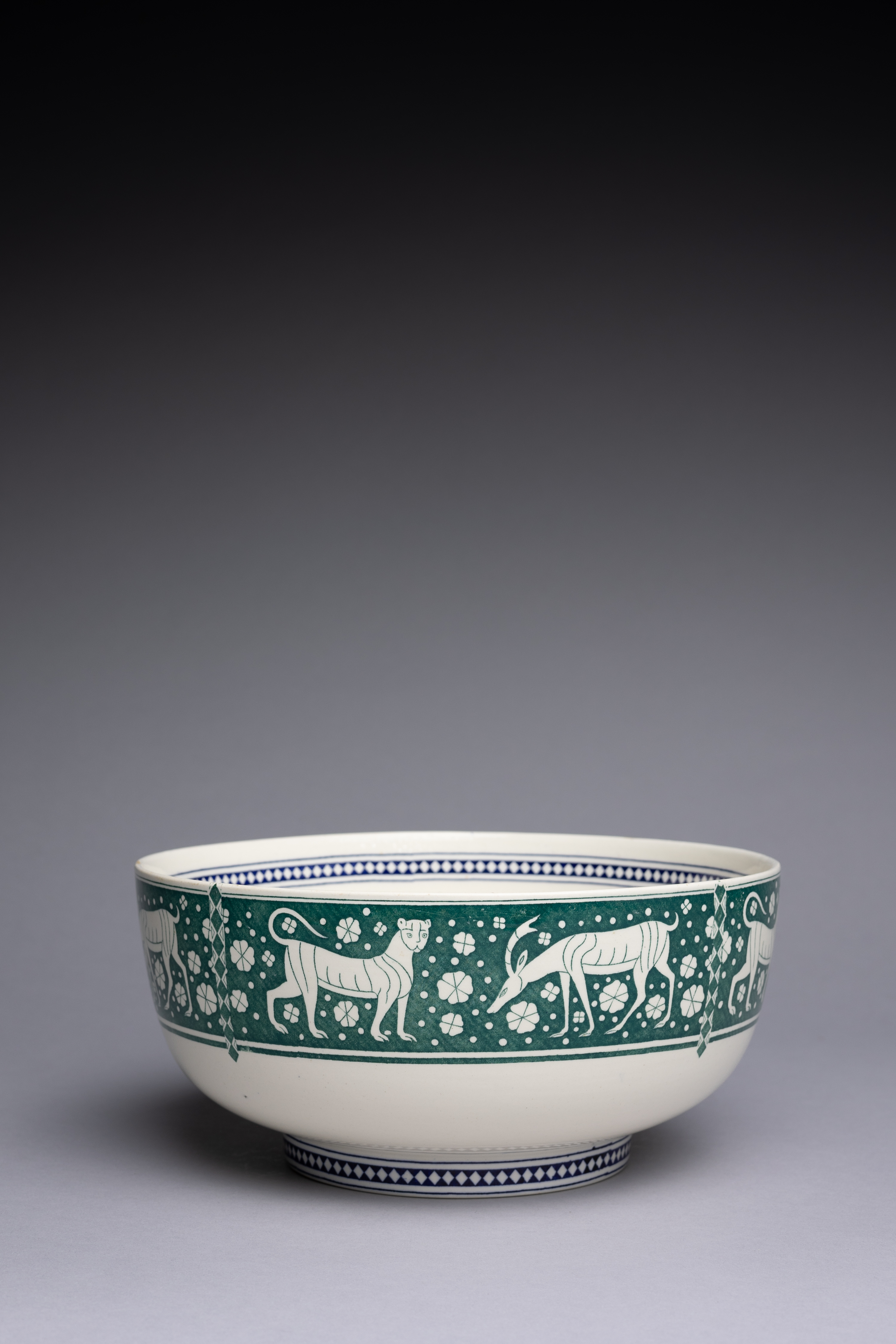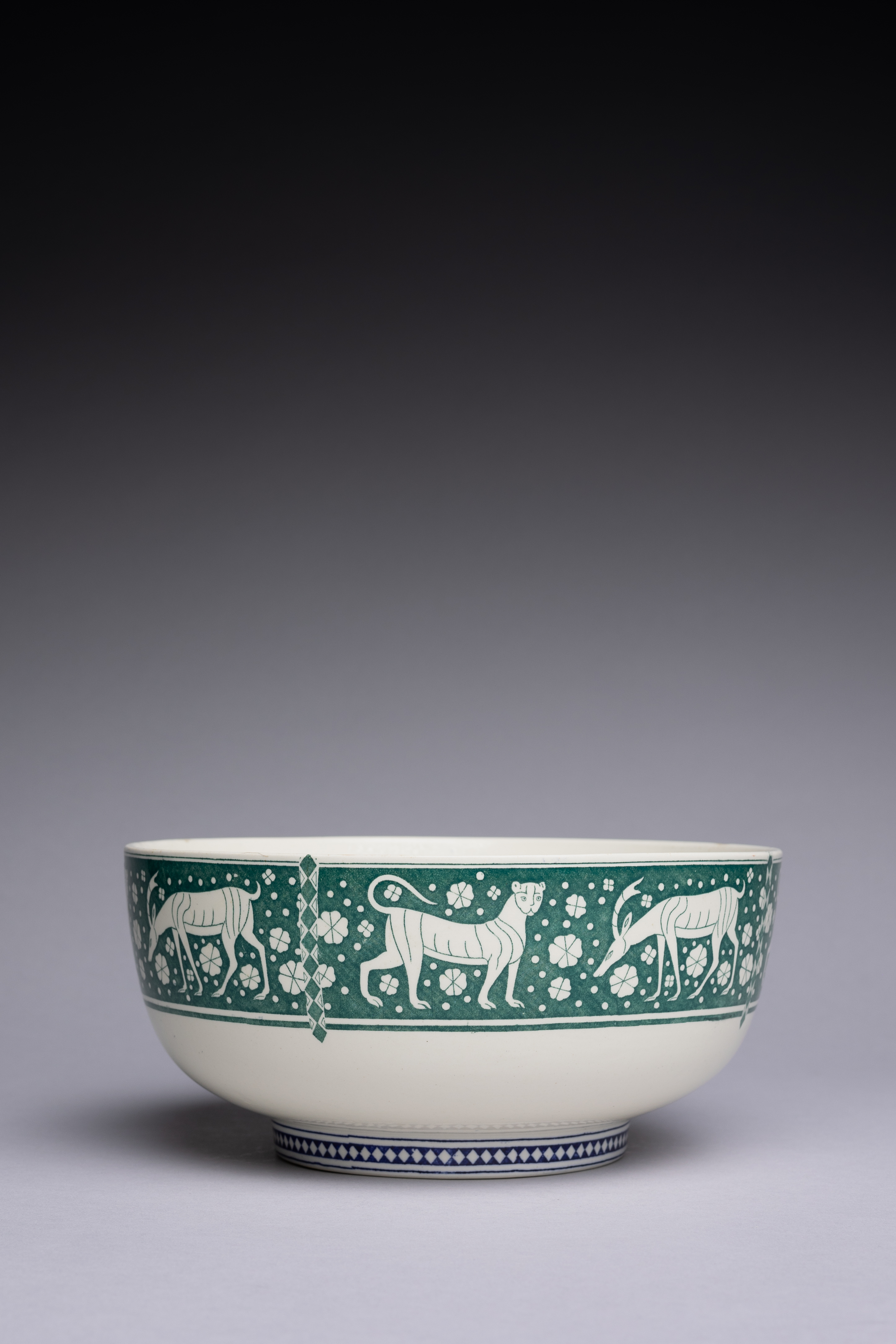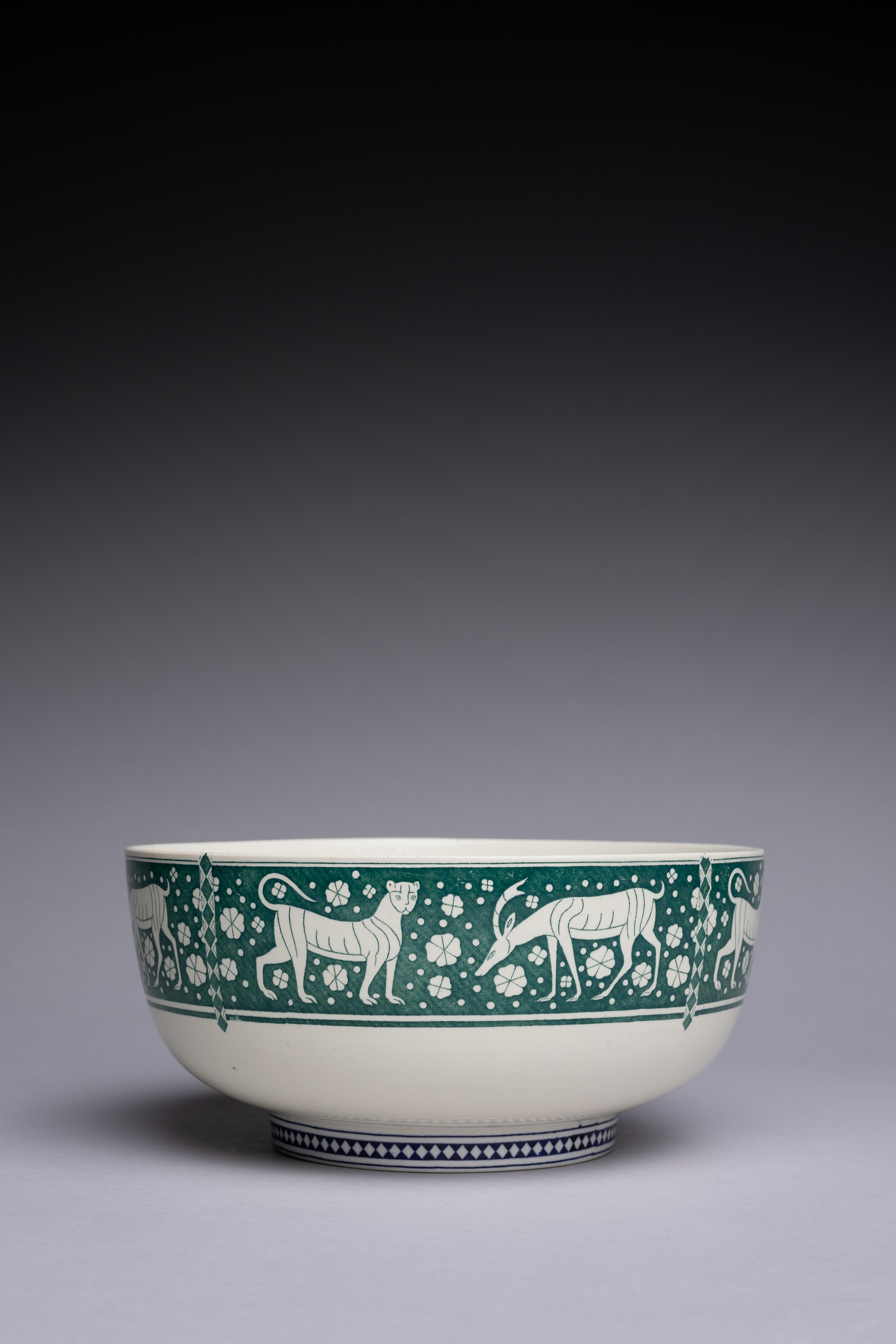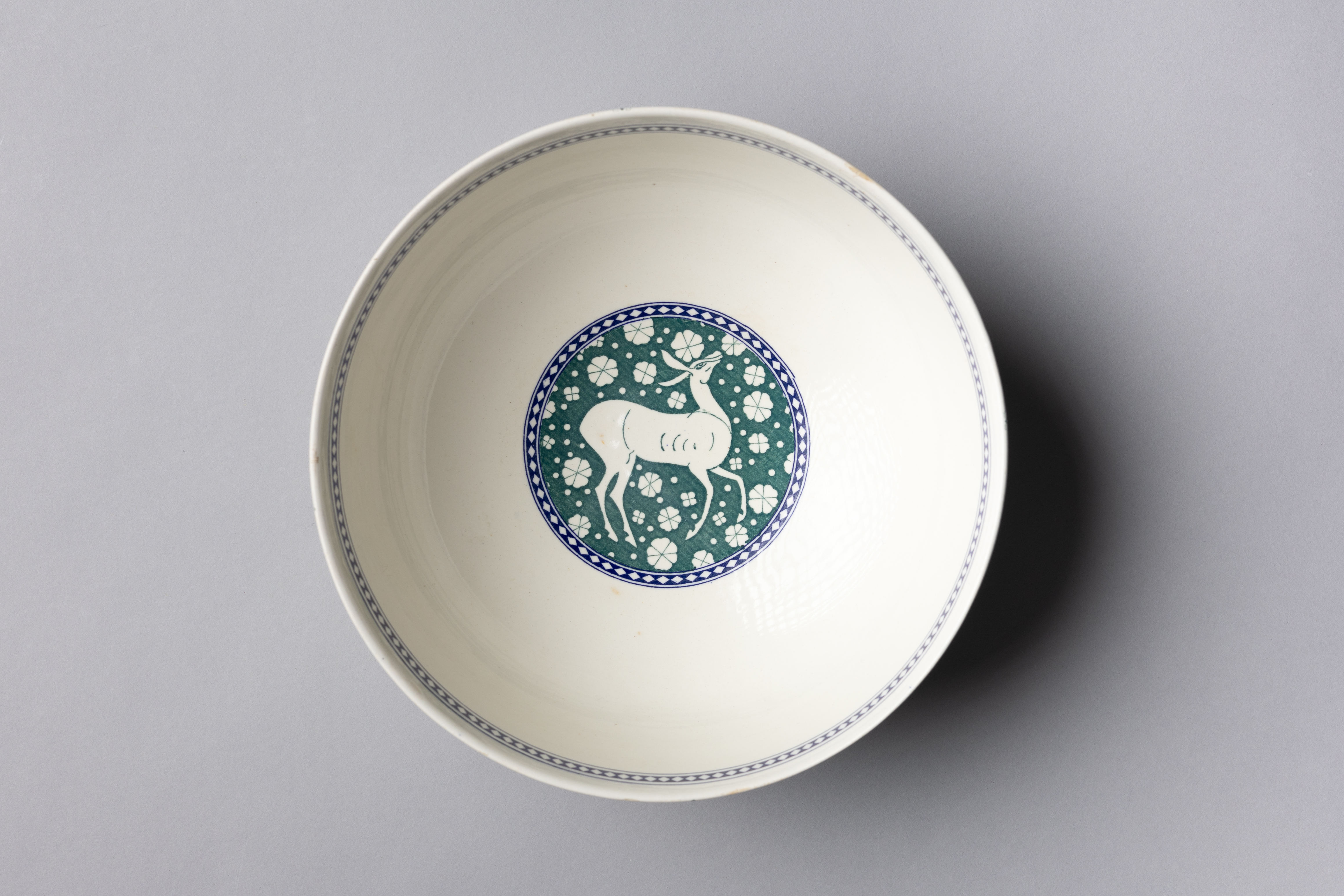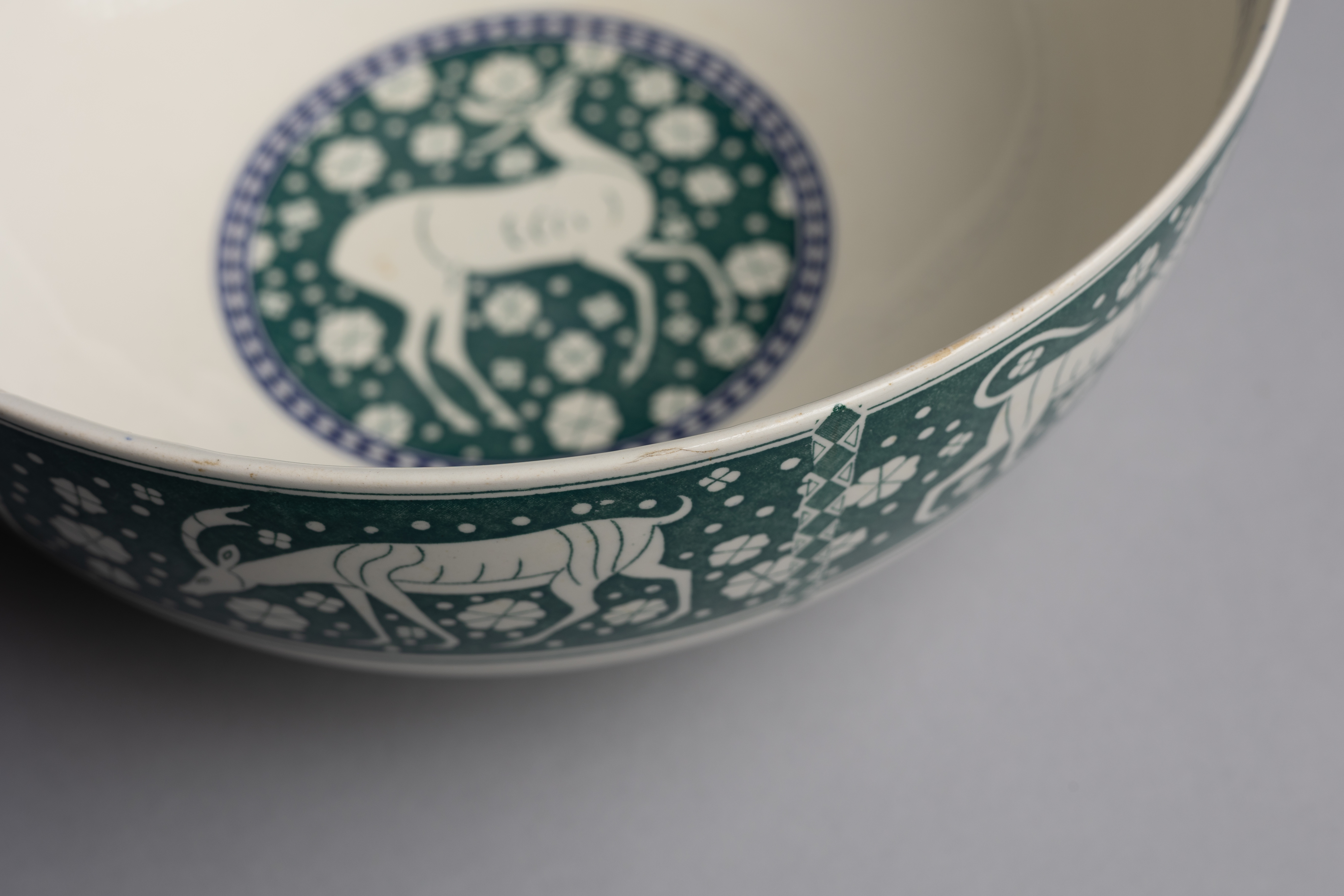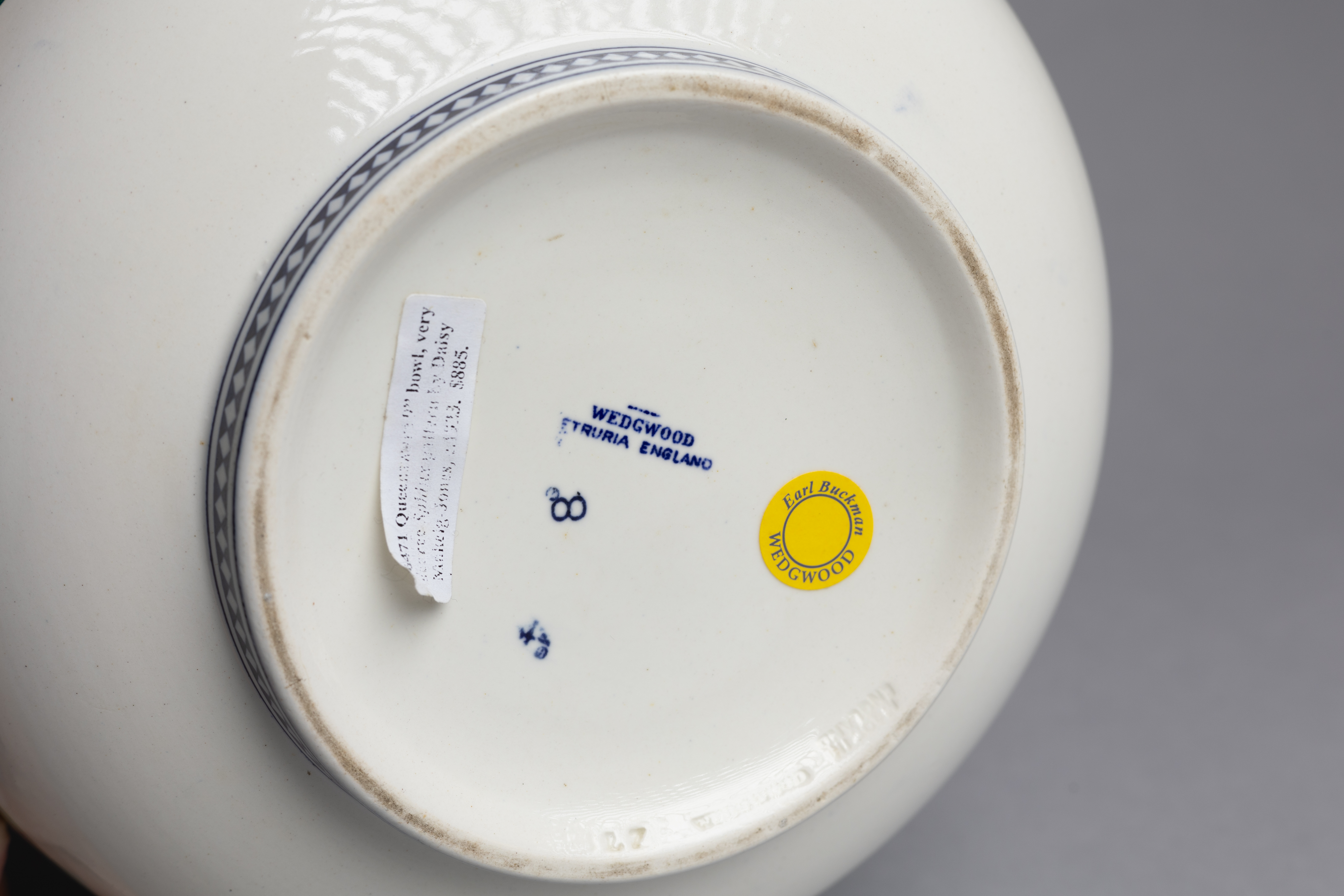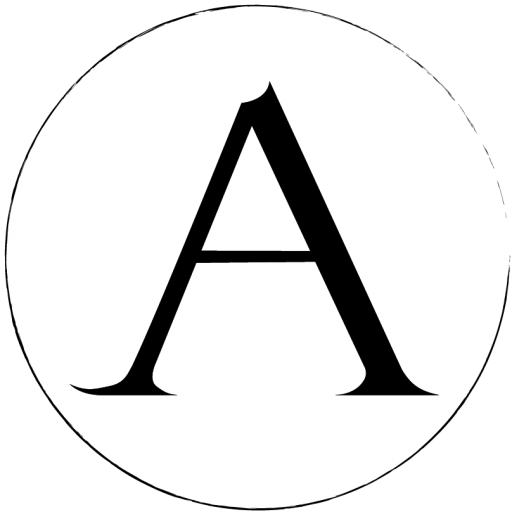While the bulk of her work was in her famous Lustre lines, Daisy Makeig-Jones did experiment with other aesthetics. ‘Celtic’, ‘Endymion’, and ‘Blue Willow’ and ‘Istria’, seen here, are among several experimental patterns designed by Daisy and produced by Wedgwood. These patterns did not prove as popular as the Ordinary and Fairyland lustres. They were produced in limited quantities and are rarely found today.
While the bulk of her work was in the Lustre lines, Daisy Makeig-Jones did experiment with other aesthetics. ‘Celtic’, ‘Endymion’, and ‘Blue Willow’ and ‘Istria’, seen here, are among several experimental patterns designed by Daisy and produced by Wedgwood. These, however, did not prove as popular as the Ordinary and Fairyland lustres. They were produced in limited quantities and are rarely found today.
Essay
This ‘Istria’ pattern bowl by Wedgwood designer Daisy Makeig-Jones is quite a departure from her typical body of work. The pattern’s restrained, geometric pattern of Attic animals and simplified color palette bears no resemblance to her boldly polychromatic and fantastical Ordinary and Fairyland Lustre lines.
The pattern is taken from an Ancient Greek vase from the 18th-century collection of Sir William Hamilton (presently in the collection of the British Museum). The original vase, a black-figure ware pyxis, is a circa 590 BC-570 BC transitional Corinthian piece, a period which is categorized by Middle Eastern influences and depictions of animals over human figures. The design on the pyxis is identical to the one seen here (though with a different color scheme): panthers and goats grazing in a field of flowers. But how did this design arrive from an ancient vase to the 1920s English market?
In the 1760s, Sir William Hamilton oversaw a massive excavation of Ancient Greek and Roman pottery just outside of Naples. The collection was immortalized in a Catalogue by Pierre d’Hancarville to serve as a source of inspiration for English artists and designers, who readily copied the Ancient motifs onto their own work. Josiah Wedgwood I, who was a close friend of Hamilton, added a catalog to the factory library, and it was from that very catalog that Daisy copied the animals of the ‘Istria’ pattern.
Daisy continued the Wedgwood factory tradition of copying designs from Sir William Hamilton’s catalog. Since acquiring the catalog in the 1760s, the factory reprinted Hamilton designs on plates, bowls, candlesticks, and more; they even created a line of replica Antique vases. Hamilton’s catalog, and Daisy’s present use of it in this bowl, illustrates a long tradition of the importance of the copy in British design. Only in the 20th century did the notion of the copy become a nefarious one. Traditionally, the copy was either seen as artistic homage, or simply an existing model that was to be used for the convenience of designers and artists.
BT
Condition
Very good. Minor area of glaze wear to rim measuring approximately 1 cm. Tiny hairline across bowl rim measuring 0.8 cm. Some scattered, almost invisible scratching to well of bowl.
For a detailed condition report, please contact us.
Literature
Una des Fontaines, Wedgwood Fairyland Lustre: the Work of Daisy-Makeig Jones (New York: Born-Hawes, 1975), pp. 231-232, fig.103.
References
Design taken from British Museum 1772,0320.497
Pierre d’Hancarville, Collection of Etruscan, Greek and Roman antiquities from the cabinet of the Honourable William Hamilton (Naples: 1766), design illustrated vol. II pl. 119.
This ‘Istria’ pattern bowl by Wedgwood designer Daisy Makeig-Jones is quite a departure from her typical body of work. The pattern’s restrained, geometric pattern of Attic animals and simplified color palette bears no resemblance to her boldly polychromatic and fantastical Ordinary and Fairyland Lustre lines.
The pattern is taken from an Ancient Greek vase from the 18th-century collection of Sir William Hamilton (presently in the collection of the British Museum). The original vase, a black-figure ware pyxis, is a circa 590 BC-570 BC transitional Corinthian piece, a period which is categorized by Middle Eastern influences and depictions of animals over human figures. The design on the pyxis is identical to the one seen here (though with a different color scheme): panthers and goats grazing in a field of flowers. But how did this design arrive from an ancient vase to the 1920s English market?
In the 1760s, Sir William Hamilton oversaw a massive excavation of Ancient Greek and Roman pottery just outside of Naples. The collection was immortalized in a Catalogue by Pierre d’Hancarville to serve as a source of inspiration for English artists and designers, who readily copied the Ancient motifs onto their own work. Josiah Wedgwood I, who was a close friend of Hamilton, added a catalog to the factory library, and it was from that very catalog that Daisy copied the animals of the ‘Istria’ pattern.
Daisy continued the Wedgwood factory tradition of copying designs from Sir William Hamilton’s catalog. Since acquiring the catalog in the 1760s, the factory reprinted Hamilton designs on plates, bowls, candlesticks, and more; they even created a line of replica Antique vases. Hamilton’s catalog, and Daisy’s present use of it in this bowl, illustrates a long tradition of the importance of the copy in British design. Only in the 20th century did the notion of the copy become a nefarious one. Traditionally, the copy was either seen as artistic homage, or simply an existing model that was to be used for the convenience of designers and artists.
BT
Very good. Minor area of glaze wear to rim measuring approximately 1 cm. Tiny hairline across bowl rim measuring 0.8 cm. Some scattered, almost invisible scratching to well of bowl.
For a detailed condition report, please contact us.
Una des Fontaines, Wedgwood Fairyland Lustre: the Work of Daisy-Makeig Jones (New York: Born-Hawes, 1975), pp. 231-232, fig.103.
Design taken from British Museum 1772,0320.497
Pierre d’Hancarville, Collection of Etruscan, Greek and Roman antiquities from the cabinet of the Honourable William Hamilton (Naples: 1766), design illustrated vol. II pl. 119.
This item ships free to the continental US, and globally for a flat-rate fee of $150.
All objects are packed with utmost care by our team of expert fine art shippers. All items are shipped with parcel insurance.
For more information on our shipping policies, please visit our FAQ Page.

